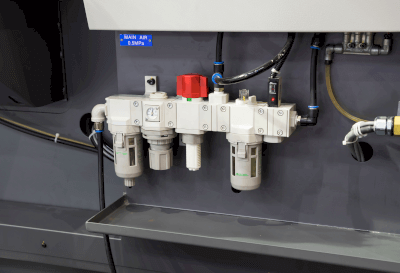What Is a Filter Regulator Lubricator?
 The FRL unit, comprising a filter, regulator, and lubricator, is crucial in pneumatic systems for processing supply air. These units are particularly vital for the stable operation of pneumatic tools and machinery.
The FRL unit, comprising a filter, regulator, and lubricator, is crucial in pneumatic systems for processing supply air. These units are particularly vital for the stable operation of pneumatic tools and machinery.
Filters and regulators are indispensable in many pneumatic lines for removing impurities and controlling air pressure, even as the use of lubricators has declined with the advent of oilless pneumatic equipment.
Uses of FRL Units
FRL units play a pivotal role in cleaning and stabilizing air in pneumatic systems, thereby extending the lifespan of pneumatic equipment. The filter, typically upstream, removes contaminants from air compressed by the compressor. The regulator then adjusts this air to the required pressure. Lubricators, which add oil to the air, are less common now but still find use in specific applications.
These units are often installed in the air supply section of pneumatic systems in various industrial settings.
Principle of FRL Units
In an FRL unit, the filter, regulator, and lubricator are connected in sequence, starting from the upstream side of the pneumatic line. This arrangement simplifies connections, requiring only two air tubes — one upstream from the filter and one downstream from the lubricator.
The filter typically removes particles between 5 and 60 micrometers in size. The regulator then balances the fluctuating pressure from the compressor using a pressure-regulating spring. While traditional lubricators are now less common due to grease-filled, lubrication-free cylinders, some systems still use them for specific tasks. Additionally, modern FRL units might include a mist separator to further purify the air, removing particles as small as 0.4 micrometers.